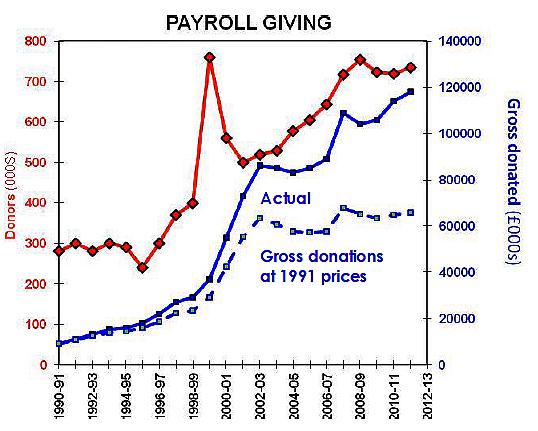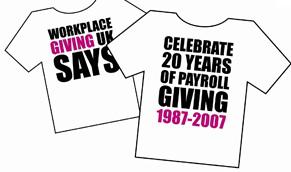Good money going begging
Andrew Papworth asks when is the sector going to do something about payroll giving?
- Written by
- Andrew Papworth
- Added
- May 15, 2013
The latest data from HMRC show a small increase in the number of donors making use of payroll giving in the tax year 2011-12 (red line in the chart below). This is good news as far as it goes but – as the graph shows – use of the scheme has not yet recovered to the level of 2008-09 (ignore the previous peak around the start of this millennium, which was due to a short-term scheme calledChildren’s Promise).
On the face of it the solid blue line shows annual gross donations looking more promising; sure there was a dip, but growth looks healthy since 2008. However, if you look at the dotted blue line, which takes account of the changes in RPI (the retail price index) since 1991, you’ll see that this is misleading. In real terms there has been hardly any growth for a decade.

It’s not hard to see why; the red line on the graph below shows that since about 2002 the average net amount given per earner has wavered between about £100 and £120 per year (just £8 to £10 per month). So, donors had certainly not been keeping up with inflation – even before the recession struck.
This performance must be regarded as a collective failure by the sector. There was a lot of bleating about the budget changes to various tax reliefs but here is a potential source for regular money staring the sector in the face and little is done about it.
The concept of give as you earn ought to be quite attractive to anyone on PAYE, particularly for higher rate taxpayers – and especially if employers can be persuaded to match or top-up donations as part of the corporate social responsibility programmes. So, why is the uptake so poor? Do people not know about it? Are companies reluctant to get involved? Are people embarrassed to sign up for smaller amounts – say, £5 per month? Are the specialist agencies falling down on the job?

Sure, admin costs could be a problem for some charities, as well as building a relationship with give-as-you-earn donors. But the thing is: payroll giving is likely to be an addition rather than a substitute for other forms of giving. Once donors have signed up, they are quite likely to forget and be just as open to other appeals as anyone else. If payroll giving became the norm for all companies and all employees vast sums would be raised and the perceived problems would shrivel into insignificance.

Major charities need to get together to raise the profile of the scheme. Maybe there needs to be an annual ‘payroll giving month’ during which there is a concerted public relations effort to bring together employers, employees, government and charities in a regular push to bring the attractions of the scheme to higher attention.


















